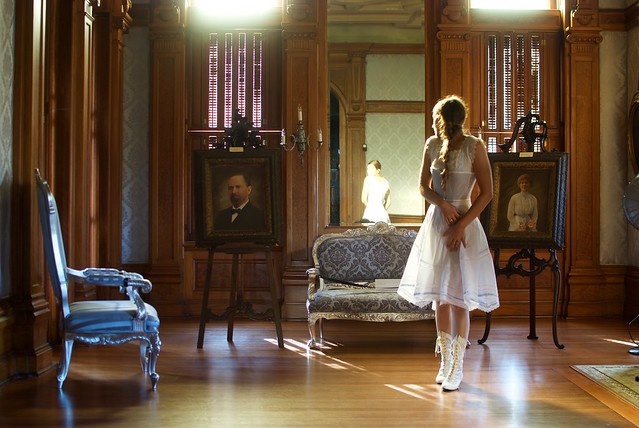
What is going on?!?!?! Why am I dressed like this?? But more importantly - why am I taking photos INDOORS?!?!?!
Has Hell frozen over?
Is it the End of Days?
Clearly I have some explaining to do... Get ready for a long post. Grab some tea (or a beer). I'll wait.
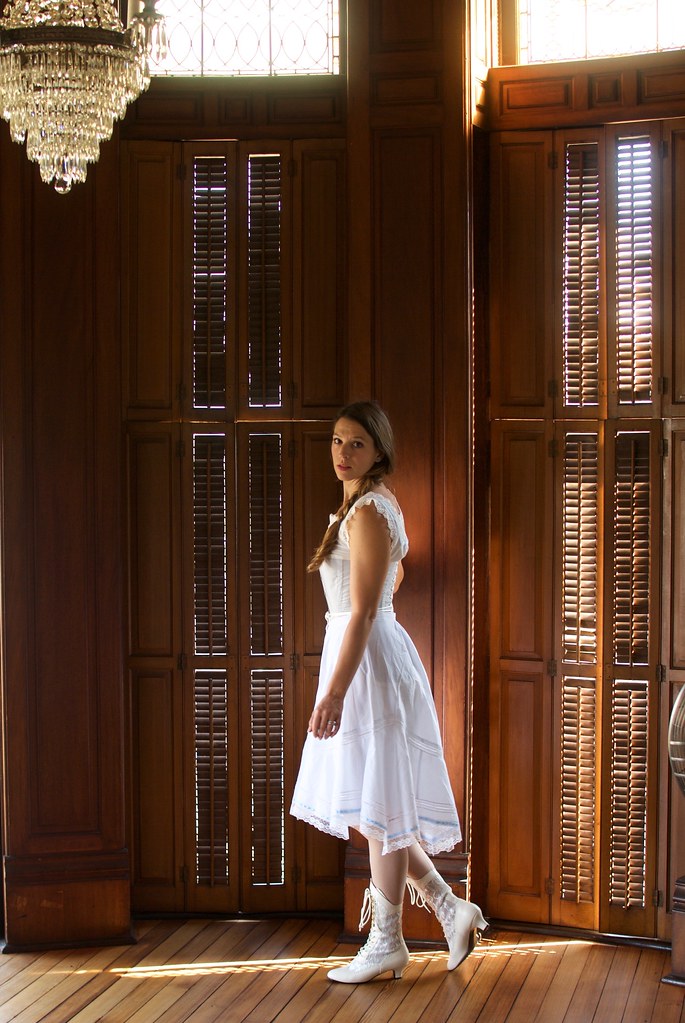
Okay, I get that this post probably comes as zero shock to anyone who follows me on Instagram, but for those of you that don't, let me introduce you to my historical costume. Or at least the beginnings of my historical costume. There will be more, because what you see here is just my underwear. And while this involves more clothing than I wear in the middle of January, as a proper old-timey lady I wouldn't be caught dead in public while so scantily clad!
So let's start at the very beginning (a very good place to start)...
My husband, Nick, works for the Galveston Historical Foundation, who every year hold a large event in December called Dickens on the Strand. Perhaps you're wondering why on earth there is a celebration of Victorian England in Galveston Texas? A very good question. And one I don't have a great answer for. But as I understand it, the Strand in Galveston, which boasts some beautiful buildings from the mid 1800's, was basically abandoned and neglected and there was a big push in the 1970's to save some of the old buildings from demolition. So one of the things they did to raise awareness of preserving Galveston's historical architecture was to hold a Victorian celebration downtown, which was Dickens on the Strand. Galveston is home to many festivals and celebrations, and they are particularly fond of ones where you get to dress up, so Dickens is right at home. People come from all over dressed in their Victorian finest. Also their Steampunk finest. And their Pirate finest... the definition of "Victorian" is very blurry here...
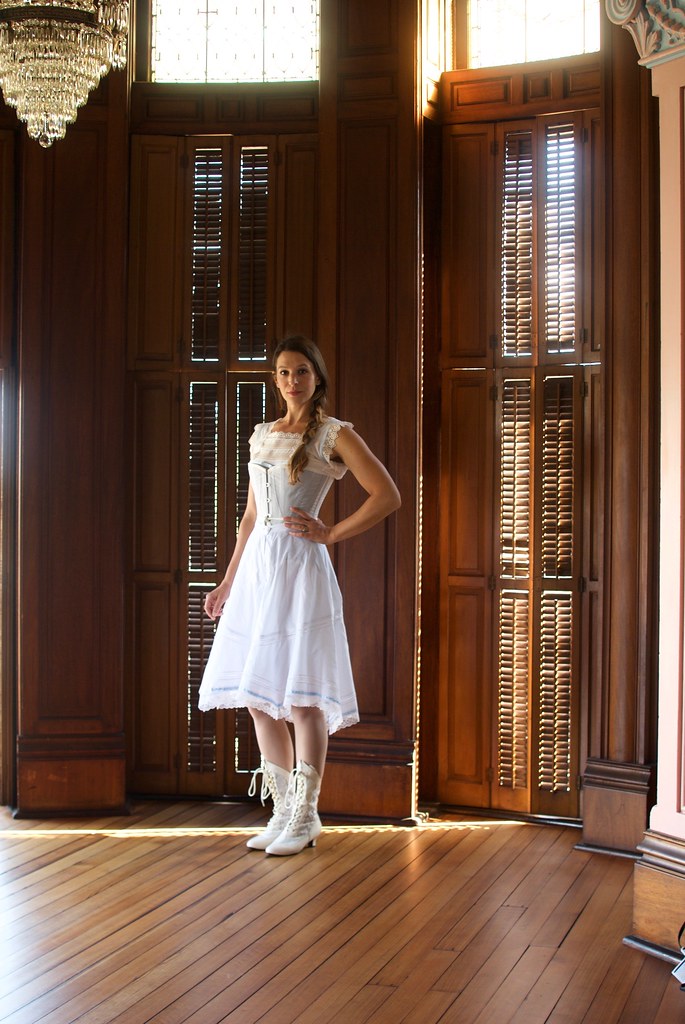
Last year, I was asked to fill in as a judge for the costume contest, a role I was more than happy to take on, as I've always had a soft spot for period clothing, and I LOVE judging people! (Just kidding. Kinda...) So at the eleventh hour I borrowed a costume from the Historical Foundation and attended my first Dickens on the Strand. And it was a blast. However the entire day I felt like a fraud in my borrowed costume.
I know I'm not alone when I say that I grew up reading Jane Austen and the Brontë sisters, Henry James and, well, Charles Dickens, that I'd rather spend my Saturday nights watching a period film - any period film - simply to ogle at the costumes - than go out and socialize with real people from my own time period, and the only reason I held on to Downton Abbey for as long as I did was to see Maggie Smith as Lady Violet. Basically, my love for fashion stems from my love for historical fashion. As an art student I always loved Art History for its ability to bring History to life, to literally put a picture to a historical moment, a political movement, to revolution, to cultural shifts. I feel that fashion history does something similar in such an intimate way. We all have a connection to clothing.
What I'm trying to say here, is that I was more than a bit excited to have an excuse to make a historical costume!
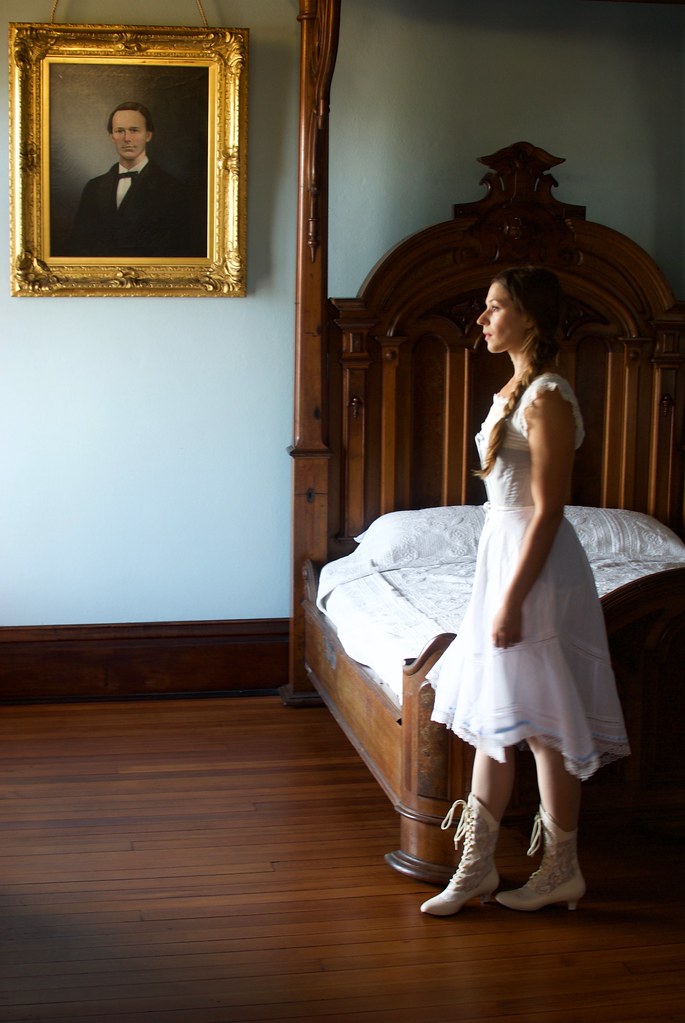
But let's be real. Historical costuming is uncharted territory for me. I've always been thoroughly practical with my personal sewing. The goal has always been to build a handmade wardrobe, which I will continue to do. Historical sewing is rather a different niche from the one I'm used to occupying in the sewing blogosphere! So I knew I had to proceed with caution.
First, I did my research. I learned about the fashion of the Victorian period. And I honed in on what interested me. I found I was much more drawn to the styles of the 1890's through the turn-of-the-century. Queen Victoria died in 1901, however she had really ceased to be a fashion icon before then. The styles I was more interested in were early Edwardian, or very very late Victorian. This is also an era that I found to be very underrepresented at Dickens on the Strand, which definitely prefers the bustles of the 1880's (which I always think makes everyone look like a pair of curtains) or the hoop skirts of the 1860's. These are also more true Victorian examples.
But here's the thing. Making a historical costume is a lot of work. So I decided if I was going to put in all the work it better damn well be something I loved. Which meant no curtain dresses for me! I found a pattern to work with which was a nice mish-mash of late Victorian and early Edwardian styles (more on that to come) and decided on Edwardian undergarments to accentuate certain features of the design.
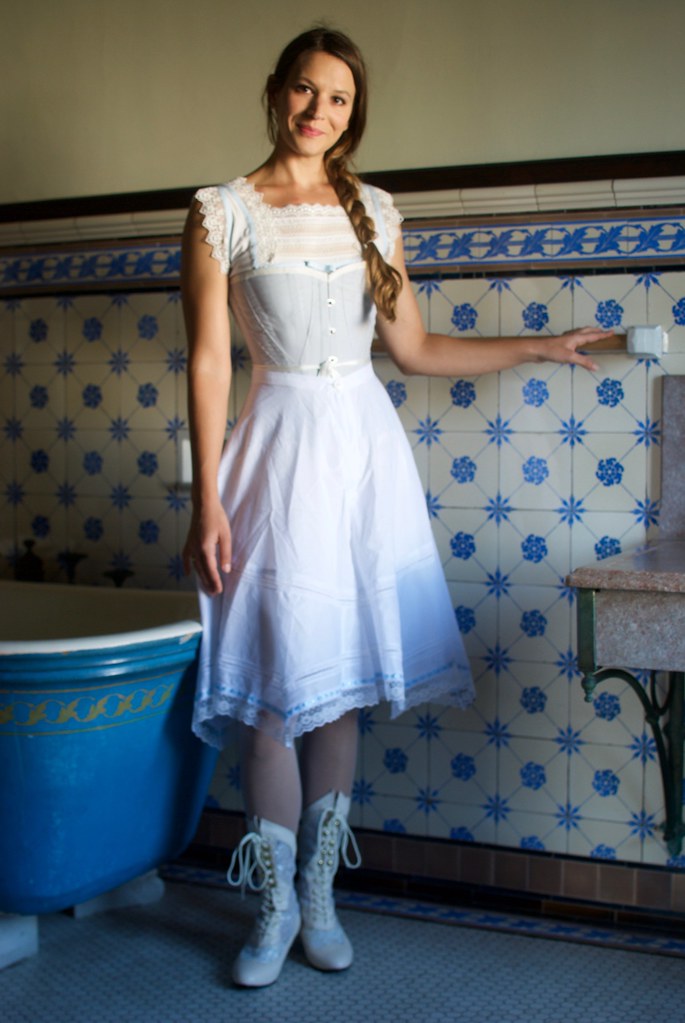
All of the patterns for my undergarments are from Truly Victorian. I bought their Edwardian Underwear set - which came with a pattern for a chemise, drawers, and a corset cover - and the 1903 S-bend corset, which is based off of an actual corset from 1903.
The Edwardian silhouette was quite singular, and just as it is today, undergarments were key in achieving the desired look (don't believe that this is still true today? Take a look at a push-up bra). Towards the end of the 19th century, women's bodices started to show a pronounced, full, low bust, called the 'pigeon-breast' or 'pouter-pigeon' which was accentuated by a nipped in waist (usually highlighted with pointed and arched belts) and skirts which were slimmer over the hips. This silhouette became more exaggerated into the early 20th century, with bodices becoming even fuller and 'poutier' and skirts becoming even more slim, and featuring a trumpet flare.
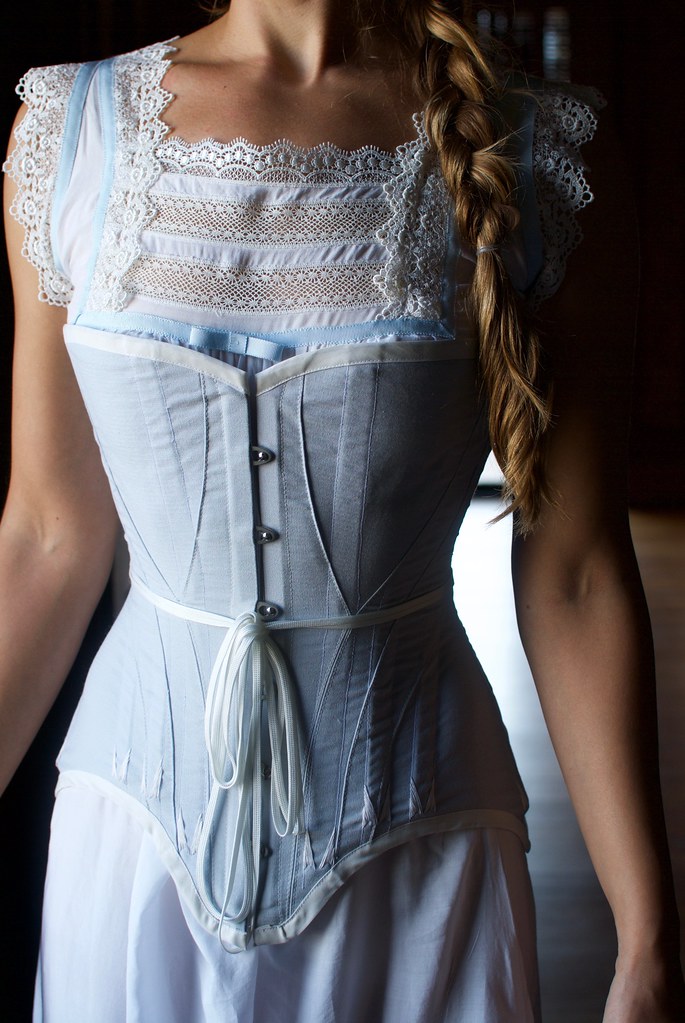
The foundation for this silhouette was the S-bend corset. This style of corset differs greatly from the traditional hourglass corset of the Victorian era. It features a straight front which subtly shifts the wearers posture so the bust pushes forward, and the hips and rear push backwards, creating an 'S' shape from the side.
There is much to be said about the history of corsets and the politics surrounding them. I doubt there is a single item that gets pointed at as the symbol of women's oppression more than the corset. Personally, I've always viewed corsets as rather democratic. It's not like once they fell out of fashion so did unrealistic expectations of women's bodies! Instead, the post-corset era demands that women strive for an unattainable ideal through fad diets, exercise, or (perhaps most frustratingly) "good genetics" (#iwokeupthisway). Which seems way more oppressive, and ultimately soul-crushing than saying "Here, strap this thing on your body, hold your breath, and pull these strings. You'll look great! Sure, you might get indigestion and constipation, but at least you can take it off at the end of the day."
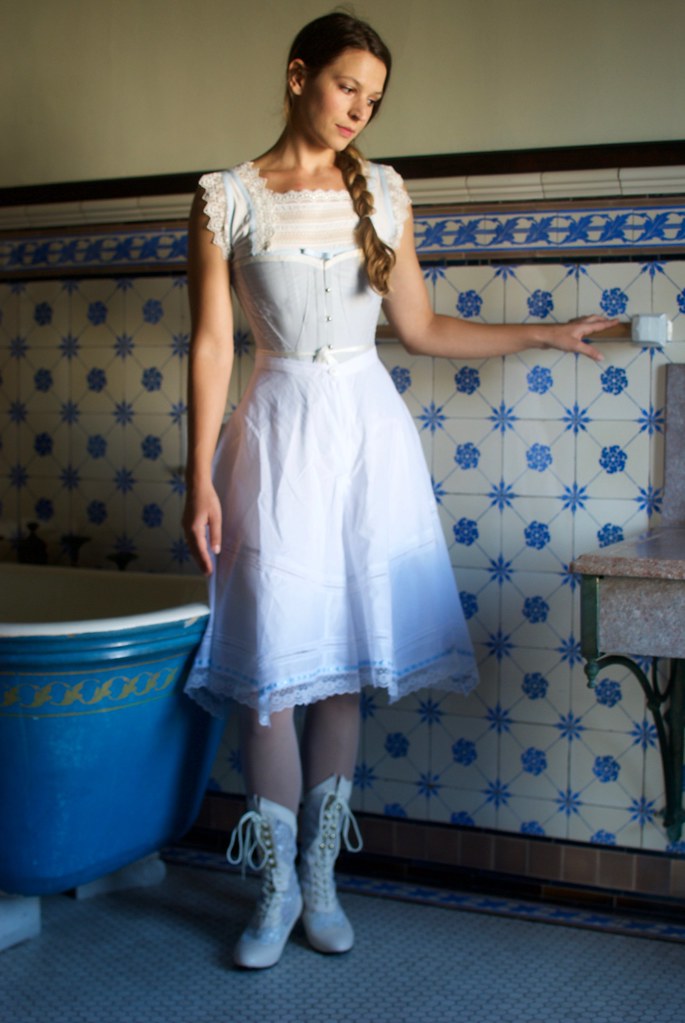
The s-bend corset was actually marketed as a "health corset" as it was designed to not compress the stomach or lungs as much as the Victorian hourglass shape. When worn correctly, the s-bend corset nips in the soft part of the waist, then flares out over the ribcage and bust. As I mentioned previously, the bust and hips would have been padded out to exaggerate the wearers shape, giving the illusion of a much smaller waist.
When you look at images of women from early photography and the turn-of-the-century it's important to distinguish between photos meant for fashion, or fetish purposes, which are almost always altered (images like this, or this) and photos of actual women going about life, or having their portrait taken. When you look at the latter images it becomes clear that the average woman wasn't lacing her corset to extremes. Sure, many factors contributed to women being on average smaller than women today (in both height and girth) but you also see a variety of proportions and body types that has nothing to do with corsets.
I obviously do not wear this corset with any regularity or for long periods of time, but I have found it to offer quite a lot of flexibility with size. In the photos here my waist is about 1 inch smaller than my natural waist measurement. I think it might look like more because of the way the corset distributes the width around the body, making it appear smaller head-on, but actually thicker from the side. This is actually quite comfortable for me. I've also laced it with no reduction in my measurements, letting it just be a foundational layer that creates an exaggerated shape, and I've also pulled the laces as tight as I can, reducing my waist measurement to about 2 inches. More than that just wasn't going to happen! I found that the 1 inch reduction was my happy place, where I feel comfortable enough in this to wear for longer periods of time, and so I've used this to base my measurements on for the rest of my costume.
I also haven't padded out my bust or hips, therefore I'm not really portraying an actual ideal Edwardian silhouette. But honestly, there is just a lot of details to consider when making a historical costume that some of the elements had to be overlooked or else I'd never get this done on time! Perhaps I will add to it in the future...
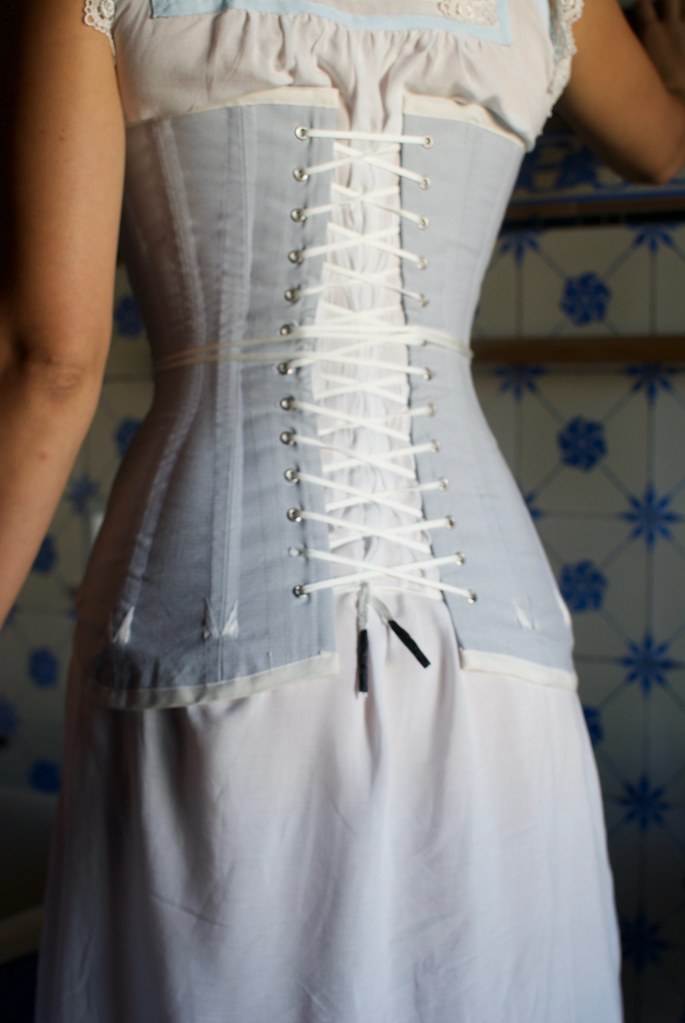
I had a blast making this corset! From a strictly engineering standpoint it is a fascinating garment! I have no prior experience with corsetry, and this particular design is suggested for experienced corset makers. Whoops. Well, all I can say is that I generally do best when I dive headlong into a project!
All the materials for my corset were bought from Farthingales Corset Making Supply. The fabric is a blue-gray coutil and I used a 13 inch busk. For boning, this corset calls for 1/4 inch spring steel bones, which bend front-to-back, but not side-to-side. Two bones are placed side to side in 3/4 inch bone casing which I stitched down the middle to create two channels. The corset is unlined, with most of the raw edges concealed by the casing, or else pinked to prevent fraying. I bought my grommets from Gold Star Tools and I used their heavy duty press to both punch holes and set the grommets. This worked well, however I think the hole punch was just a tad too big for this size grommet, and for this particular garment which needs to withstand a lot of strain. There doesn't seem to be quite enough fabric for the grommet to "bite" into, so when I pull my corset tight the fabric strains around the grommet. I don't think this will prevent me wearing it for costume purposes, however if I ever make another corset I think I will use a smaller size cutting die, or simply an awl to make the holes.
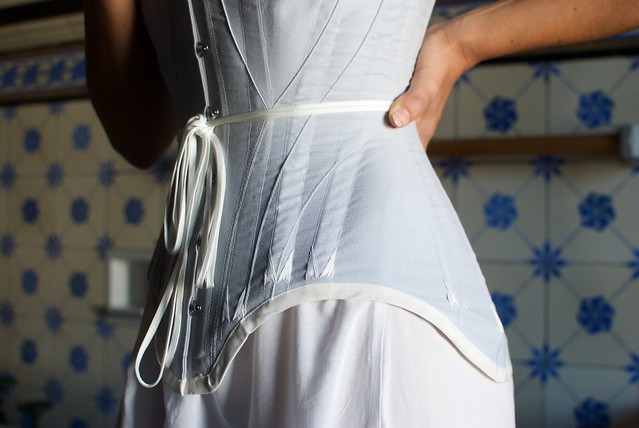
Typically, corsets from this era would have been adorned with lace and ribbon at the top, but I kind of liked the look of it plain, and I was also looking to cut corners where I could. I did, however, make time to apply flossing to the bones, which are those little pointy embellishments you see along the bottom of the corset. Flossing is a type of functional embroidery, meant to provide additional strength to the garment to prevent the bones from wearing through over time. Again, this is really unnecessary on my corset as I'll probably only wear this maybe once a year, but I thought it was a pretty little detail and it provided an opportunity to learn something new, as I've never embroidered anything before! Flossing could get quite elaborate, particularly on Victorian corsets. I went with the most simple design I could, as I was literally learning on the job.
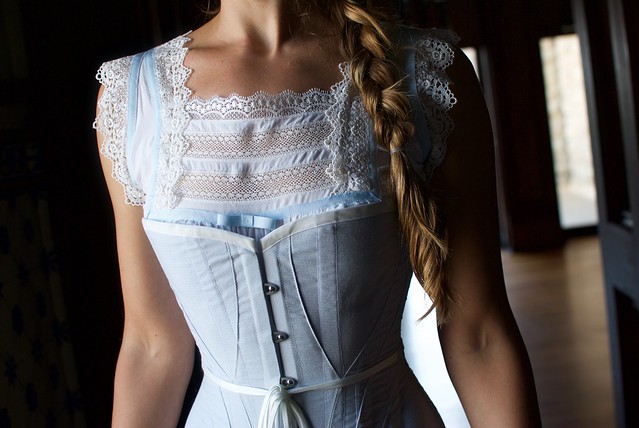
My chemise was actually the very first component that I made for my costume. A chemise is like a long undershirt that was worn directly next to the skin and protected the corset, and the gown, from sweat, and body oils. Women would have owned more chemises than gowns, and they would have been washed much more frequently than the rest of their wardrobe. During the Victorian era, chemises were quite simple and very simply adorned, or completely plain. However, underwear in general became frillier and frothier into the Edwardian period, so this was an excellent opportunity for me to learn my way around applying trims and lace insertion -- two techniques that I have never done before.
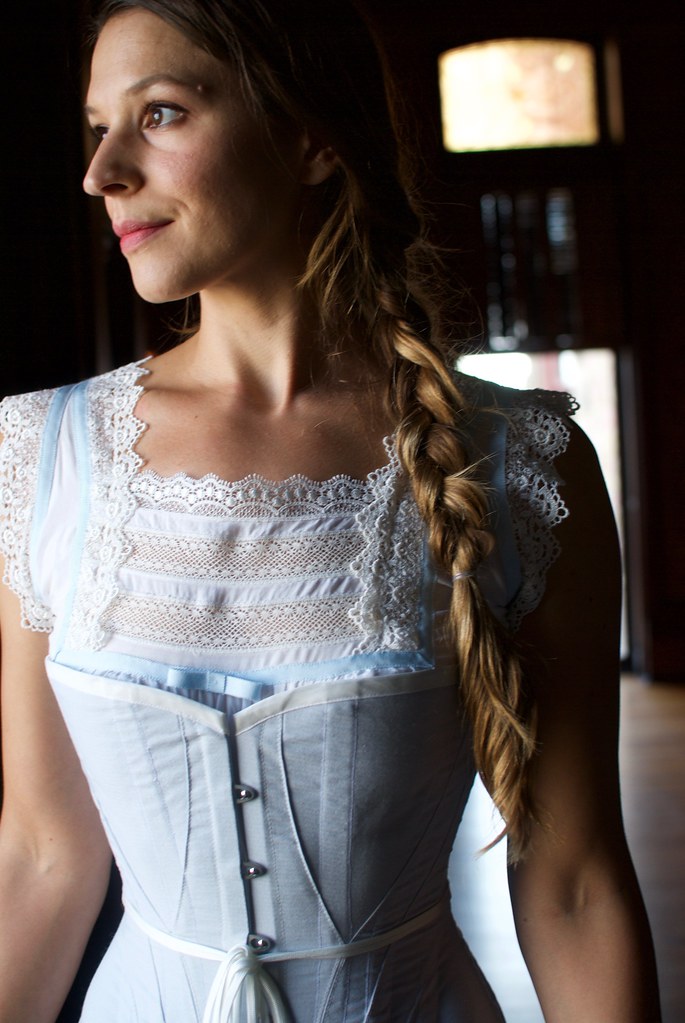
I used a cotton-viscose blend batiste for my base fabric because it was incredibly soft and lovely and it would feel nice next to my skin. Viscose obviously wasn't available as a fiber during the time period, but I had this fabric in my stash, and it does lend a lot of softness to the fabric. Just as I occasionally had to cut corners with certain details, I also tried to source as many of the supplies from my stash as I could, because historical costumes ain't cheap!
The blue ribbon is a cotton petersham. As you can see, I have a bit of a blue and white color scheme going on here! There are three types of lace on my chemise. The wider, pointy lace edging is soft and made of cotton, and I chose it because a) I thought it was pretty and b) I thought it would feel nice, as sometimes lace can be scratchy. This was my first time doing lace insertion, which is those strips of lace interspersed with fabric that you see on the yoke. This was one of those techniques that I had always assumed involved some kind of witchery, but is actually really straight forward. You simply stitch the lace down on top of the fabric using a zig-zag stitch along each edge. Then you slice down the center of the fabric underneath it, press is open, then zig-zag over the lace edge a second time, and finally trim away with raw edge of the fabric on the wrong side. The raw edge of the fabric is prevented from fraying by the zig-zag stitch. Witchery it is not. Tedious? Yeah, a bit. It wasn't too bad on the chemise as I was only adorning a small area.
I should also mention that the instructions for this pattern don't really tell you how to do any of this. They simply say something like "decorate as desired" or "finish with trim". So I had to do some Google image searching to see examples of chemises. Then some more googling to find tutorials on how to do lace insertion, how to miter a corner when applying ribbon trim, etc. Try googling "heirloom sewing techniques" and you'll find a lot of great tutorials for lace insertion, piping, tucks and other such old-timey embellishments.
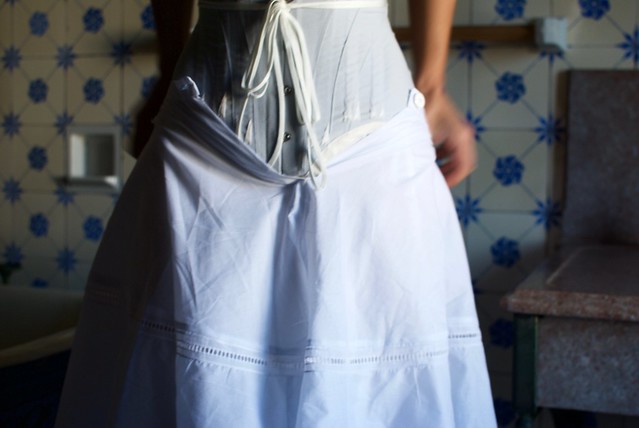
I love this photo, as it seems so scandalous, and yet I'm still wearing multiple layers of clothing!
These are my French drawers. Again, they differ from Victorian drawers as they have a much fuller, and shorter leg. Often times the drawers were attached to a corset cover on top, making for a set of "combinations". Spoiler alert: I didn't make a corset cover. Nor did I make a petticoat. Again, maybe next year. The French drawers feature a split crotch, to allow for the Edwardian lady to visit the outhouse without taking off fifteen layers of clothing in the process. I suppose the split drawers also allow for easy access for other activities...? Still, I'm not looking forward to using the toilet in this getup, as it's quite a lot of fabric to maneuver...
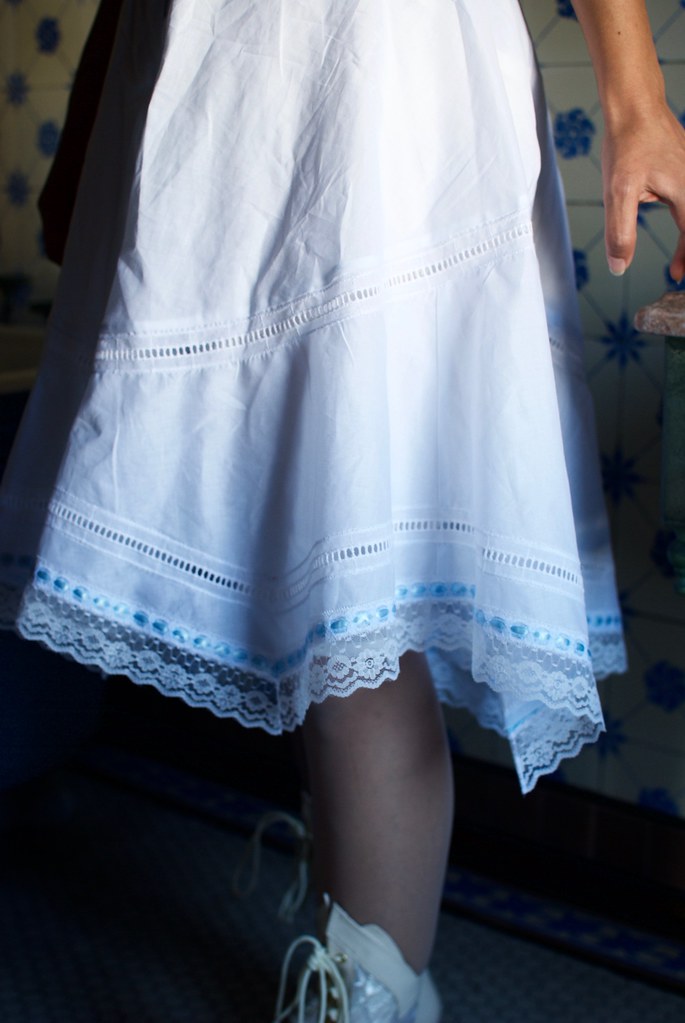
I used a cotton lawn for these, also from my stash. The drawers are, once again, embellished. These drawers feature a curved hem, finished with a pointed flounce. To highlight the style lines I used cotton faggoting insertion, applied in the same way as the lace insertion described above. The flounce is finished with a row of faggoting insertion again, and then lace beading, and a wider lace trim.
These. Were. A. Pain.
Yeah, that was a lot of insertion. It took me forever. The lace edging was actually two separate trims that I had to stitch together first then apply to the hem. The shaped leg and pointed yoke meant that I was having to get fancy with mitering the trims, which took some trial and error to get right. And none of this will actually be visible in my finished costume...
Sigh.
But isn't it pretty?!?!
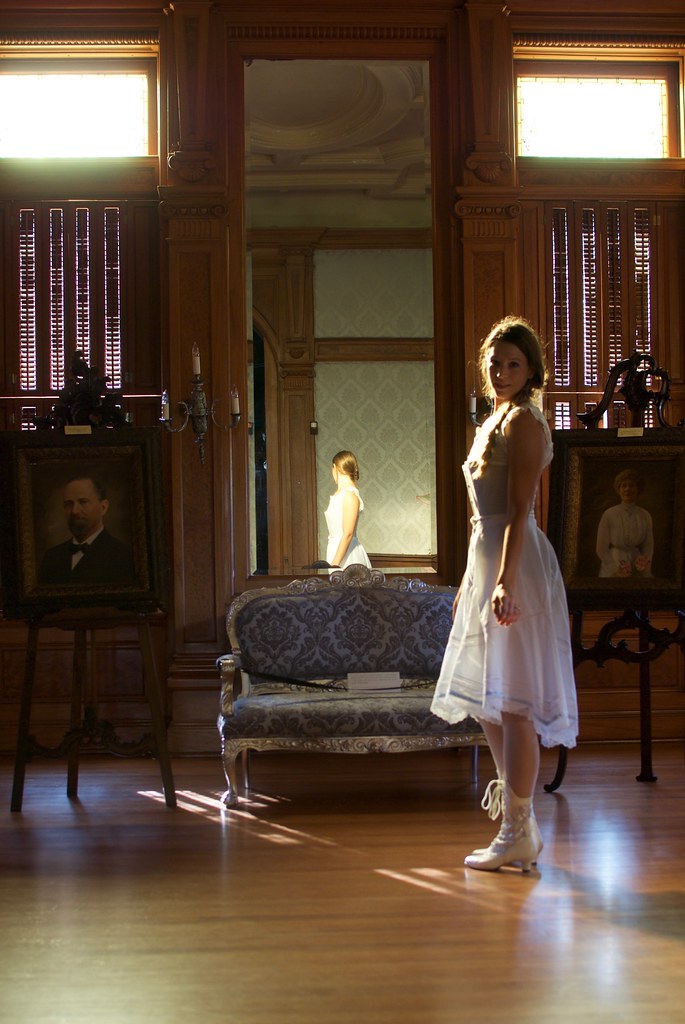
On that note, perhaps you're wondering... Why??? Why go to all this trouble for something I'll only wear once, maybe twice? Why go to all this trouble for such an impractical garment? Especially when it's So. Much. Work.
Well, I've had a lot of time to think about this (while cursing over cotton faggoting). The main reason I'm doing this is quite simply -- because it's fun. Honestly. This has been the most engaging, challenging sewing I have done in awhile. This is not to say that I don't love making modern things, but it's actually really liberating to sew something simply because you want to. With no practical concerns whatsoever. Not to mention, a privilege. I've always loved indulging in a few fantasies, and making this costume has appealed to that side of me ten-fold.
The other reason is, as I said, for the challenge of it. I've had to learn new techniques, research materials and methods, not to mention the historical research that has gone into it. While some of those new skills probably won't translate to my modern sewing, some have already got my wheels turning for how I can incorporate them into something more wearable everyday. I'm particularly enamored with the lace insertion. This is a detail which crops up a lot, as Victorian elements are always coming in and out of style. I am envisioning making some poet sleeve blouses with lace detailed yokes...
So, if you've ever had a desire to make a completely impractical garment - Cosplay, a ballgown, a wedding dress - I highly encourage you to do it. If for no other reason than to remind yourself why you love this craft to begin with.
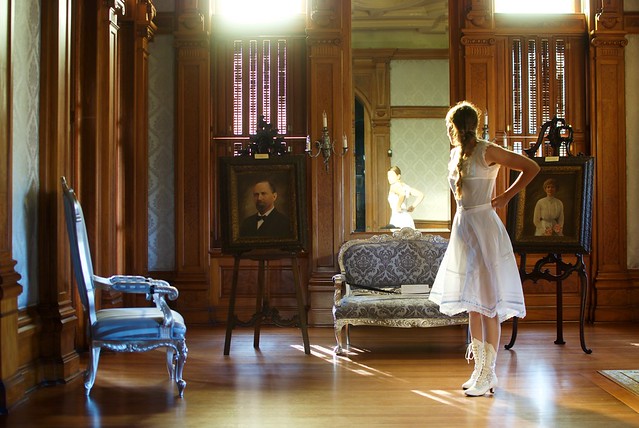
And THAT, my friends, concludes this mammoth of a post! If you made it to the end, bravo! Obviously I had a lot to say on the subject of historical costumes, and I hope I didn't bore you all to tears!
But, before I go I would be incredibly remiss if I didn't extend a few thank you's for this post.
First, a huge thank you to the Galveston Historical Foundation for granting me access to one of their properties, Bishops Palace, after hours, to take these photos. I don't usually spend my days swanning about in such luxurious interiors, so it was a treat to play dress-up and make-believe for a bit on this sunny Saturday afternoon. If you're ever in Galveston, make some time to tour this gorgeous mansion. Everything in here has been preserved to the original decorations, and all the furniture you see in these photos is original to the house. And these photos only show a small sliver of its beauty.
And finally, many many thanks to Nick for taking my photos, for getting me permission, for unlocking the doors, framing the shots, and only jumping out at me to scare me out of my boots a handful of times. And, of course, for not laughing at me when people on the street were looking at me like I've lost my marbles.
That's all folks! Stay tuned for Historical Costume Part II: The Attack of the Taffeta Skirt!
xx

No comments:
Post a Comment